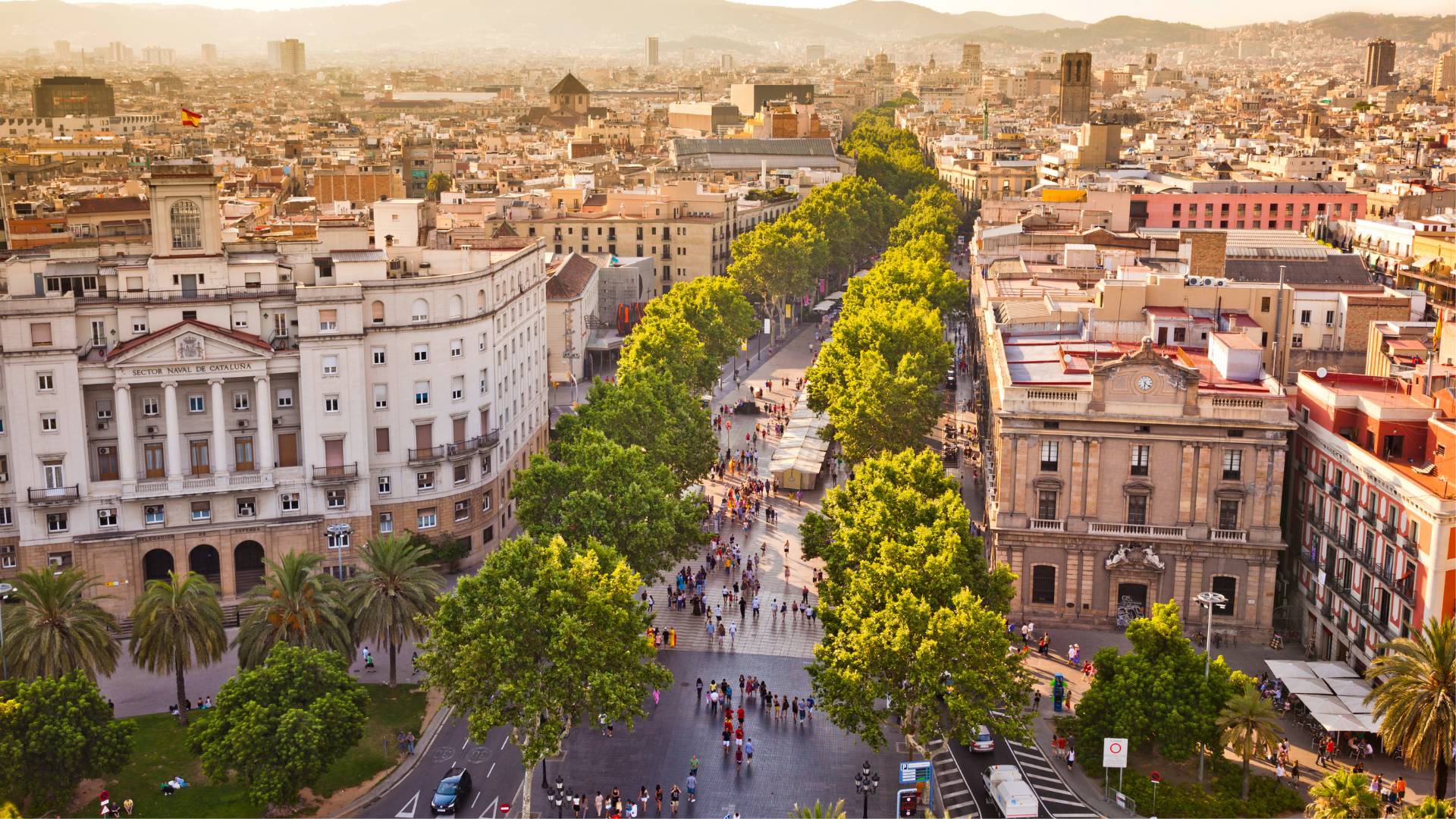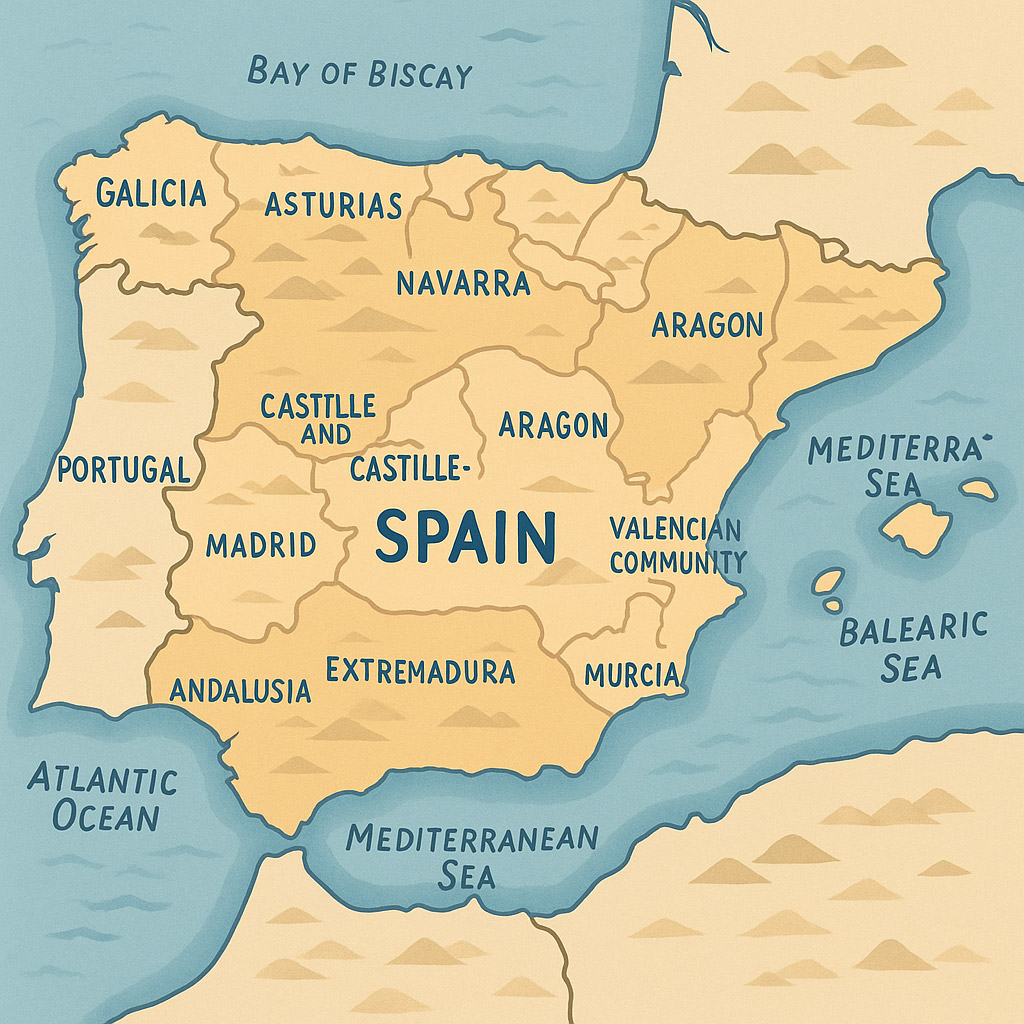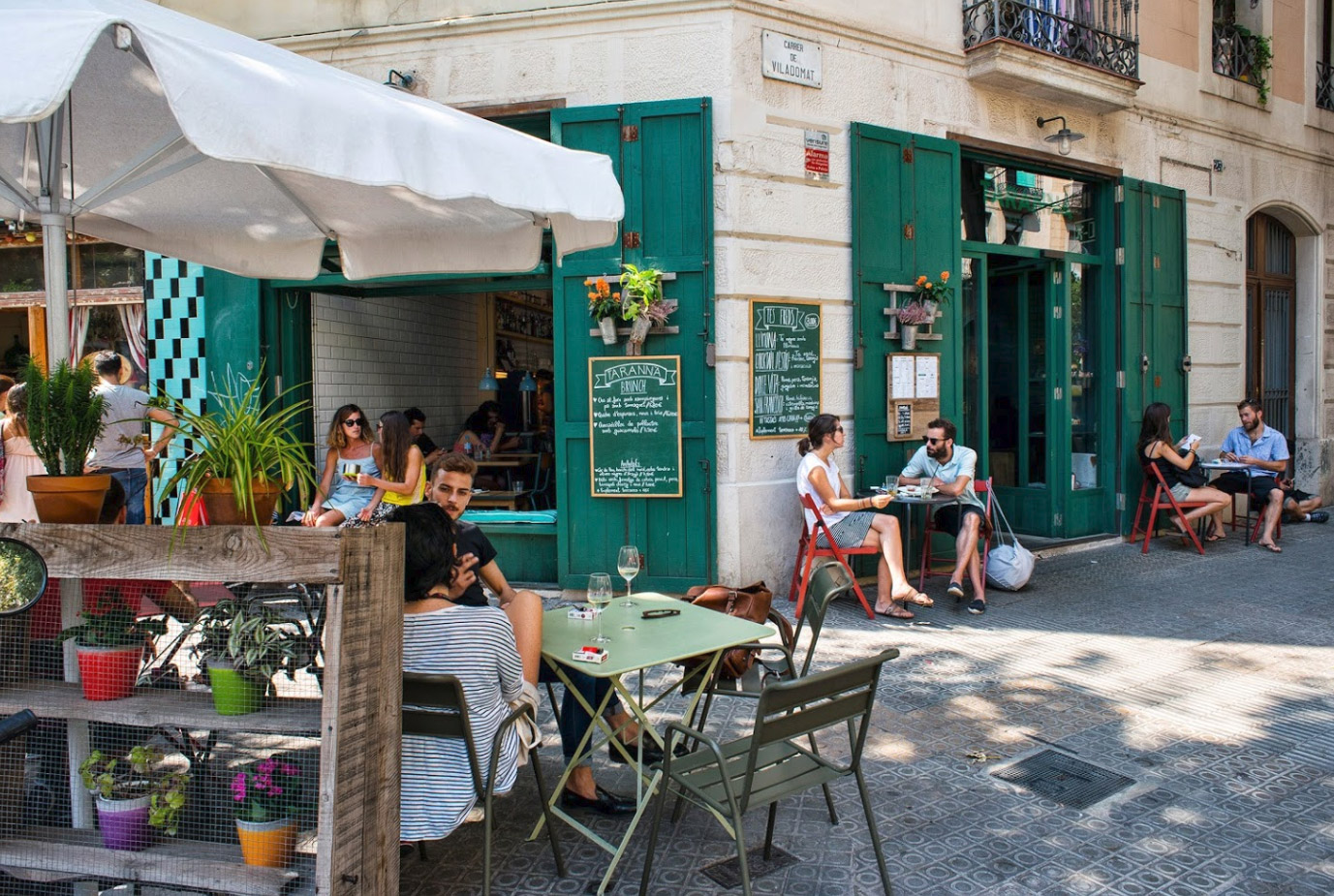
Spain is one of Europe’s most visited countries – a place where historic cities, sunny beaches, mountain villages and world-class cuisine all fit into one compact, easy-to-travel destination. This Spain Fast Facts guide gives you a clear, practical overview of the country so you can understand the basics at a glance and then dive deeper into our more detailed travel guides.
Use this page as your starting point, then continue to our in-depth articles on About Spain, Top Destinations in Spain, Things to Do in Spain, Food & Drinks in Spain and Travel Tips for Spain.
Key Facts at a Glance
| Official Name | Kingdom of Spain (Reino de España) |
|---|---|
| Continent / Region | Europe (Iberian Peninsula), plus Balearic Islands, Canary Islands and two North African enclaves (Ceuta & Melilla) |
| Capital City | Madrid |
| Major Cities | Barcelona, Valencia, Seville, Bilbao, Málaga, Zaragoza |
| Population | Approx. 47–48 million |
| Official Language | Spanish (Castilian); co-official regional languages include Catalan, Galician and Basque |
| Currency | Euro (€) |
| Time Zone | Central European Time (CET, UTC+1) and Central European Summer Time (CEST, UTC+2); Canary Islands: UTC & UTC+1 |
| Government | Parliamentary constitutional monarchy |
| Schengen / EU | Member of the European Union and the Schengen Area |
| International Dialing Code | +34 |

Geography & Regions
Spain occupies most of the Iberian Peninsula in southwestern Europe and borders Portugal, France, Andorra and the Mediterranean Sea. The country also includes the Balearic Islands in the Mediterranean, the Canary Islands in the Atlantic, and two small enclaves in North Africa (Ceuta and Melilla).
For travelers, Spain is often easiest to think of in terms of regions:
- Central Spain: Madrid and the historic plateau of Castilla-La Mancha and Castilla y León.
- Eastern Mediterranean Coast: Barcelona, Valencia and the Costa Brava / Costa Blanca beach regions.
- Southern Spain (Andalusia): Seville, Granada, Córdoba and the Costa del Sol.
- Northern “Green Spain”: Galicia, Asturias, Cantabria and the Basque Country, with cooler, greener landscapes.
- Islands: Balearic Islands (Mallorca, Menorca, Ibiza, Formentera) and the Canary Islands off the coast of Africa.
If you want to see how these regions translate into real travel ideas, head to Top Destinations in Spain for a curated overview of cities, coasts and countryside highlights.
Climate & Best Time to Visit
Spain has a surprisingly varied climate. While many visitors imagine constant sunshine, the reality depends heavily on where and when you go:
- Mediterranean climate: Along the east and south coasts – hot, dry summers and mild winters.
- Continental climate: Inland areas like Madrid – hot summers, cold winters and big temperature swings.
- Oceanic climate: Northern Spain – cooler, wetter, greener with more clouds and rain.
- Subtropical climate: Canary Islands – warm and spring-like all year.
As a simple rule of thumb:
- Spring (April–June) and Autumn (September–October): Usually the best balance of weather and crowds for city trips and road trips.
- Summer (July–August): Hottest months; ideal for beach holidays but can be very hot inland.
- Winter (November–March): Great for city breaks, lower prices and skiing in the Pyrenees or Sierra Nevada.
For a more detailed month-by-month breakdown with typical temperatures and rainfall, see Weather in Spain.
Population, Language & Culture
Spain has around 47–48 million inhabitants and is known for its mix of strong regional identities, languages and traditions. Spanish (Castilian) is the official national language, but Catalan, Basque and Galician are also widely spoken and co-official in their regions.
Travelers often notice a few cultural patterns:
- Late schedules: Lunch is often 14:00–15:00, dinner from 21:00 onwards.
- Social life outdoors: Plazas, terraces and bars are central to daily life.
- Festivals: From Semana Santa to local ferias and summer fiestas, there is almost always something happening.
To understand Spain’s culture, history and lifestyle in more depth, start with About Spain.

Currency, Money & Cost Basics
Spain uses the Euro (€). Card payments are widely accepted in shops, restaurants and hotels, and ATMs are easy to find in all cities and most towns. Tipping is appreciated but modest compared to some other countries – rounding up the bill or leaving 5–10% in restaurants is usually enough.
- Cards: Visa and Mastercard are most common; contactless payments are standard in cities.
- Cash: Useful for markets, small cafés and rural villages.
- Prices: Generally lower than northern Europe for food and local transport, but can be high in very touristy areas.
For more detailed advice on budget planning, payment habits and tipping, see Travel Tips for Spain and our upcoming guides to money and daily costs.
Time Zone, Power & Practical Details
- Time zone (mainland & Balearic Islands): CET (UTC+1) in winter, CEST (UTC+2) in summer.
- Time zone (Canary Islands): One hour behind mainland Spain.
- Electricity: 230V, 50Hz, Type C and F plugs (standard European).
- Drinking water: Tap water is generally safe in most cities; some visitors prefer bottled in older buildings or rural areas.
Transport, Airports & Getting Around
Spain is relatively easy to travel thanks to its combination of high-speed trains, domestic flights, buses and well-maintained roads. Madrid and Barcelona act as the main hubs for both domestic and international routes.
- High-speed trains (AVE): Fast connections between major cities such as Madrid, Barcelona, Seville, Valencia and Málaga.
- Domestic flights: Very common between mainland cities and islands.
- Buses: Useful for smaller cities and regional travel.
- Car rental: A flexible option for exploring countryside, villages and coastal areas.
For more detail, see our dedicated guides:
- Airports in Spain – main international and regional hubs.
- Transportation Guide for Spain – trains, buses, metros and driving.
- Car Rental in Spain – driving tips, rental advice and parking basics.
Safety, Health & Travel Practicalities
Spain is generally considered a safe country for tourists. Most issues involve petty theft (especially in crowded areas or on public transport in major cities). Violent crime involving visitors is rare.
- Pickpocketing: Most common in busy tourist districts, metro systems and large events.
- Healthcare: High standard in both public and private hospitals.
- Emergency number: 112 throughout Spain.
For in-depth advice on staying safe, handling emergencies and understanding healthcare options, visit Safety in Spain and Travel Tips for Spain.
Digital Life & Connectivity
Spain has good 4G and increasingly wide 5G coverage in cities and along major routes. Wi-Fi is common in hotels, cafés and coworking spaces. Prepaid SIM cards from providers such as Movistar, Vodafone and Orange are easy to buy in airports and shopping areas; eSIM options are also widely available.
Where to Go Next
Now that you have the essentials, the best way to continue is to choose the next layer of detail you need for your trip:
- For a story-driven introduction: About Spain.
- For inspiration on where to travel: Top Destinations in Spain.
- For what to see and experience: Things to Do in Spain and Attractions in Spain.
- For food-focused planning: Food & Drinks in Spain and Restaurants in Spain.
- For logistics and practical info: Travel Tips for Spain and Accommodation in Spain.
Spain rewards both first-time visitors and repeat travelers: whether you stick to one city, follow the sun along the coast or design a longer itinerary across several regions, these fast facts will help you understand the basics and plan your trip with confidence.
